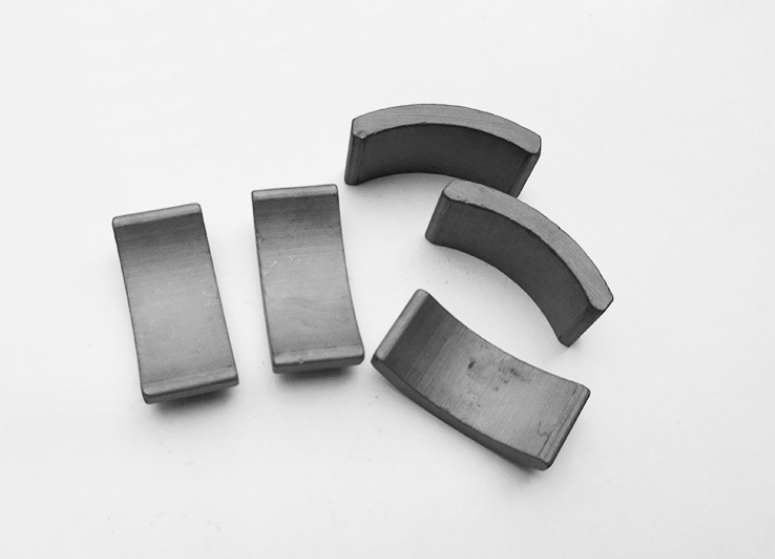The magnetic field strength (also known as the magnetic induction strength) of permanent ferrite arc magnets usually depends on the properties and geometry of the material. A permanent magnet ferrite is a magnetic material whose magnetic field strength depends on the material's magnetization strength, performance grade, shape and size, and the effect of an external magnetic field. The following factors are typically considered when designing and manufacturing arc magnets:
Magnetization strength of magnetic materials:
Different types & grades of permanent magnet ferrite have different magnetic properties, including saturation magnetization strength and residual magnetization strength. These properties will directly affect the magnetic field strength of the arc magnet.
Size and shape of arc curved magnets:
The size and shape of an arc magnet affects the distribution and strength of the magnetic field. Typically, larger size tiles produce a larger magnetic field.

External magnetic field;
External magnetic fields can also affect the magnetic field strength of an arc magnet. If there are other magnetic materials or sources of magnetic field nearby, they may affect each other.
Therefore, to determine the magnetic field strength of a specific permanent ferrite arc magnet, the above factors need to be considered and detailed magnetic field simulations or experimental measurements need to be performed. Magnet manufacturers often provide technical specifications on the magnetic properties of their products to help engineers and designers select the right material and size to meet their specific needs.
Strength of permanent ferrite arc magnets mainly includes the following indicators:
Magnetization strength (coercivity, Coercivity): Magnetization strength indicates the magnetic field strength required for a tile to return to an unmagnetized state under the action of an external magnetic field. A higher magnetization strength indicates that the tile is more difficult to magnetize or that the magnetized state is more stable.
Remanence (also known as magnetization retention): Remanence indicates the strength of the internal magnetic field that the tile maintains after the external magnetic field is removed. This indicator shows how strong a magnetic field can be generated by the tile and how long this field is maintained.
Maximum Energy Product (BHmax): The maximum energy product is an important property of the tile material and indicates how much magnetic energy can be stored in the material. BHmax is the product of the magnetizing strength (Br) and the magnetizing strength (Hc) of the tile and indicates the overall magnetic properties of the tile.
Intrinsic Coercivity (Hci): The coercive field is the ability of the material itself to resist magnetization by an external magnetic field, regardless of the geometry of the sample. It is a fundamental performance parameter of a material.
Temperature Coefficient (Tc): The temperature coefficient expresses the change in magnetic properties of a tile at different temperatures. For many applications, temperature stability is an important consideration.
The above is about the strength of curved ferrite related introduction, if you need high-performance curved ferrite samples, the quotation can contact our company to provide you, we have more molds to provide you with cheap prices.
Related magnet column;
Selected articles recommended by editors;
Wet pressed ferrite segment magnet performance related introduction
Schematic diagram of the basic dimensions of ferrite arc segment magnets
 China Neodymium And Ferrite Magnets Manufacturer & Supplier
China Neodymium And Ferrite Magnets Manufacturer & Supplier 


